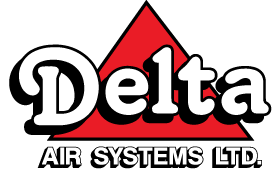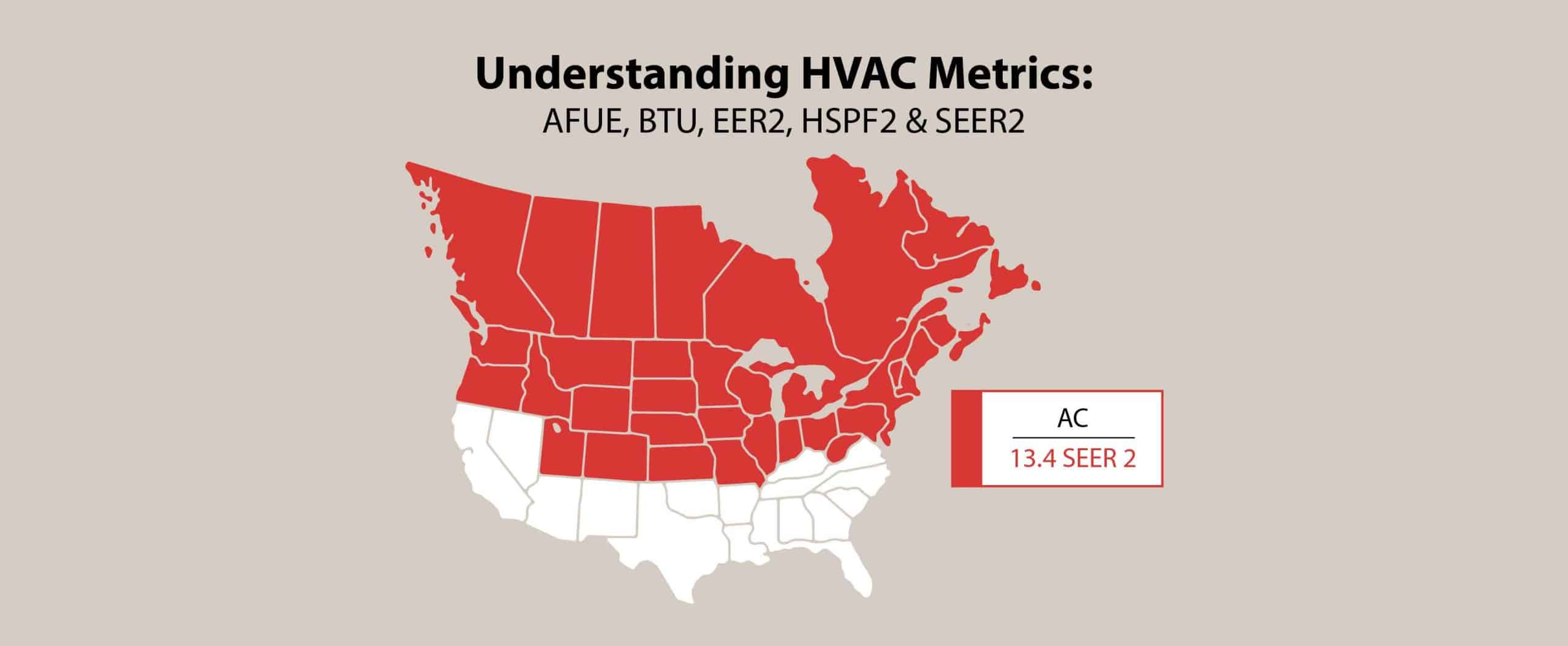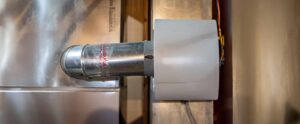Ever feel lost in the maze of technical jargon surrounding HVAC systems? You’re not alone. Terms like AFUE, BTU, and SEER2 get thrown around a lot, but what do they actually mean? This blog is your one-stop guide to understanding HVAC metrics and choosing the perfect system for your home.
New Efficiency Standards: 2023 and Beyond
As of January 1st, 2023, the U.S. Department of Energy implemented new minimum efficiency standards for HVAC equipment (regulations vary by region). Previously used metrics (SEER, EER, HSPF) have transitioned to SEER2, EER2, and HSPF2 to provide more accurate efficiency ratings in real-world conditions. This empowers homeowners to make informed choices, selecting an HVAC system that minimizes energy consumption and lowers energy bills.
These metrics all revolve around one core concept: efficiency. An efficient HVAC system translates to lower energy bills and a reduced environmental footprint. Let’s break down these HVAC metrics:
Cooling Performance
For air conditioners and heat pumps, efficiency is measured with:
EER2 (Energy Efficiency Ratio)
EER2 measures your AC’s efficiency at a specific high temperature (35°C), indicating how well it cools during peak summer heat. In Canada, the minimum EER2 is currently 12.2.
SEER2 (Seasonal Energy Efficiency Ratio)
SEER2 reflects how efficiently your system removes heat over a typical cooling season. A higher SEER2 translates to cooler summers and lower electricity bills. In Canada, the minimum required SEER rating is 13.4. Although, AC systems that boast a higher SEER2 rating signify better efficiency and lower energy consumption.
What is EER2 vs SEER2?
EER2 and SEER2 both measure efficiency, but for different scenarios. EER2 focuses on peak cooling on the hottest days, while SEER2 reflects an average efficiency throughout a typical cooling season, considering temperatures ranging from 18.3°C to 40°C.
Heating Performance
HSPF2 (Heating Seasonal Performance Factor)
This metric applies to heat pumps and reflects their heating efficiency in the winter months. It compares the total heating output over a typical season to the total electricity consumed. A higher HSPF2 means the heat pump uses less energy to keep you warm.
What is the difference between HSPF2 and SEER2?
Heat pumps excel at both heating and cooling, so their efficiency is measured by two metrics: HSPF2 for heating and SEER2 for cooling.
AFUE (Annual Fuel Utilization Efficiency)
For furnaces and boilers, AFUE measures how effectively they convert fuel into usable heat. High-efficiency furnaces in Canada can reach AFUE ratings exceeding 96%, indicating more efficient heating and less wasted fuel.
BTU (British Thermal Unit)
BTU simply measures the amount of heat required to raise the temperature of a pound of water by one degree Fahrenheit. A higher BTU rating is necessary for larger homes or colder climates to ensure efficient heating.
Choosing the Right System With Delta
Understanding HVAC metrics empowers you to make informed decisions. Consider your climate, home size, and budget. While higher efficiency ratings (AFUE, SEER2, HSPF2) typically come with a higher initial cost, the long-term savings on energy bills can be significant. Consulting a trusted HVAC professional is recommended. At Delta Air Systems, we analyze your needs and recommend a system that balances efficiency, capacity, and cost.
Contact Delta for professional advice to make the most informed decision!
Delta Air Systems Ltd. has been proudly serving the HVAC needs of the Kitchener-Waterloo, Cambridge, and Guelph regions since the 1950s. We strive to provide our clients with reliable service and cost-effective solutions.
Follow us on Facebook and Instagram for more HVAC tips and our latest promotions.




